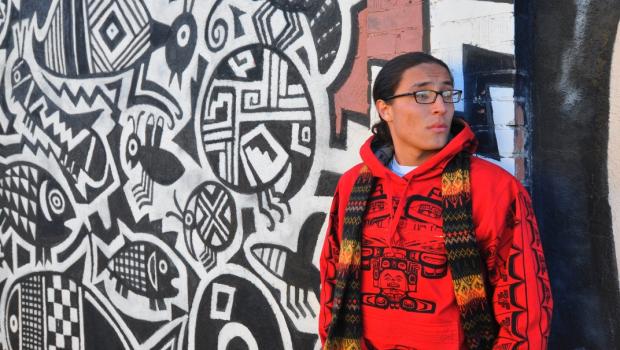President Barack Obama signaled Thursday that his administration would extend federal benefits to gay couples living in states that don’t recognize their marriages, a relief for advocates left with a thicket of uncertainty a day after their historic Supreme Court victory.
The president said the government should define marriage based on where a couple weds and not necessarily where they live – a definition of wedlock that’s essential to how the administration will implement the court’s decision Wednesday to strike a key provision of the federal Defense of Marriage Act.
“It’s my personal belief – but I’m speaking now as a president as opposed to as a lawyer – that if you’ve been married in Massachusetts and you move someplace else, you’re still married, and that under federal law you should be able to obtain the benefits of any lawfully married couple,” Obama told reporters at a news conference in Dakar, Senegal, on a trip to sub-Saharan Africa.
The president called the ruling a “victory for American democracy” and said he has directed his administration to “comb through every statute” to ensure that gay couples receive federal benefits for which they are now eligible.
The task is already proving daunting.
As jubilant same-sex couples scrambled to call attorneys and agencies and scour the Internet about new rights, officials across the government continued reviewing the 1,110 federal rights, benefits and obligations that marriage confers.
They range from Social Security and pension benefits to green cards for spouses who are not citizens. All but two are regulations the administration can change without congressional action. Social Security and veterans’ benefits are the two exceptions that may require Congress to make the legal changes to ensure that married same-sex couples get the benefits of those programs.
A White House official said the process will take time, but benefits for same-sex couples will come on a rolling basis.
But since the court stopped short of ruling that the right to marry must be extended to same-sex couples no matter where they live, state lines still determine who is legally married and who is not. And that’s where much is left for the Obama administration to interpret – and opponents of same-sex marriage to contest.
Thirty-seven states do not allow same-sex unions. Virtually every federal agency has a different standard for how it defines marriage, whether based on the place a couple weds or where they live. Some agencies do not address either definition, such as the Office of Personnel Management, which makes policy on benefits for 2 million federal employees.
The federal employee retirement law, for example, defines a marriage for retirement benefit purposes as one recognized in the jurisdiction “with the most significant interest in the marital status” of the individual, unless that law is contrary to federal policy, according to the Congressional Research Service.
A decision on which state has the “most significant interest” likely would take into account where the employee lived while working and during retirement, and where the person eventually died. Also taken into consideration would be where the couple had financial assets and where the surviving spouse lives, personnel experts say.
Some issues are more clear-cut. For example, once the ruling takes effect, a legally married gay spouse who is not a citizen should be permitted to apply for a green card in any state. Under immigration law, the rules of a state where a wedding occurs takes precedence.
But most others are not.
“You could have federal employees in D.C. getting all the benefits of marriage,” said Fred Sainz of the Human Rights Campaign, a gay rights advocacy group. “Legally, across the river in Arlington ⅛County in Virginia€, they would not get them.”
Sainz called the president’s comments Thursday an “incredibly encouraging” sign to resolving the murkiness.
“We are literally sitting on pins and needles waiting on guidance from the administration on how the court’s decision will be put into practice.”
As with immigration, the Pentagon defines marriage based on the place of celebration. Defense Secretary Chuck Hagel said the military will extend to same-sex couples medical and dental care, access to base housing and commissaries and other benefits, including the right to a burial at Arlington National Cemetery.
But for Defense Department civilians, who are covered by OPM’s murkier definition of marriage, these benefits are not as cut-and-dried.
Hagel said there is no estimate yet on how much it will cost to make the changes mandated by the ruling. “But make no mistake, it will be implemented in its entirety,” he told reporters.
Defense officials said they have launched an effort to update systems for issuing identification cards for same-sex spouses, but estimate that it will take six to 12 weeks to complete.
Stephen Peters, president of the American Military Partner Association, said some same-sex military couples now in domestic partnerships are planning to travel to states where gay marriage is legal and get married to qualify for benefits.
Shannon Simpson, who married Army 1st Lt. Ellen Schick at the U.S. Military Academy at West Point in November, said the couple are already examining what steps they will need to take to get access to the same benefits provided opposite-sex couples.
“We were looking at some of that material last night, trying to figure out what kind of paperwork I’ll have to file,” said Simpson, 26.
Simpson, who lives off-post with her spouse, will also have access to the Keller Army Community Hospital on the West Point campus where Schick, a registered nurse, is assigned.
“There’ve been times I’ve gotten ill and we’ve had to drive 45 minutes over a mountain to get to an urgent-care clinic, and thinking the whole time that this is ridiculous that we can’t drive five minutes to the hospital where she works,” Simpson said.
Questions remain about how the Supreme Court decision will affect taxes and tax filings for same-sex couples. Currently, federal law treats them differently depending upon whether their states recognize same-sex marriage and whether the couple owns property.
“We had to find special accountants who knew how to do it,” said California resident Karen Golinski, a federal attorney. “I don’t think most people understand how difficult life can be when the law doesn’t treat you the same as everyone else.”
Suzanne Artis, who lives in Connecticut with her same-sex spouse, said the ruling “feels a little unfinished.”
“The result was great, but I’m looking forward to closure – complete closure.”
Some conservative leaders who oppose the court’s ruling said Thursday that Obama may be treading on shaky legal ground by redefining marriage in states that have made it clear they do not support gay marriage.
“We would support a narrower interpretation that would only apply to the state of domicile,” said Peter Sprigg, senior fellow at the Family Research Council, which filed a friend-of-the-court brief in support of DOMA.
“If we now say the same-sex couples will be recognized as married even where states don’t allow it, you would have inconsistent benefits,” he said. “You would have to file two tax returns, federal and state, according to different laws.”
Sprigg acknowledged that a legal challenge if the federal government extends benefits to states that don’t recognize gay marriage could be tricky:
“The challenge would be to figure out who suffers harm from that recognition,” he said.














